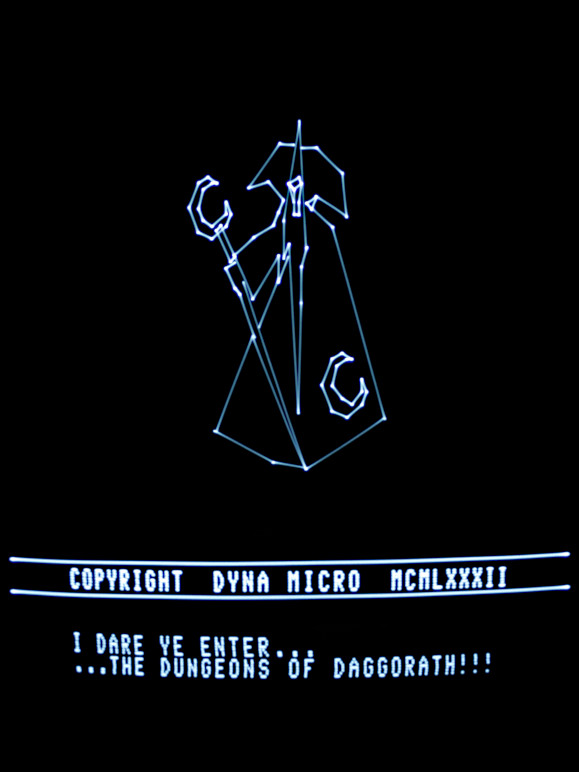After finishing ‘Akalabeth, World of Doom’ I was still in an early RPG mood so I ported ‘Dungeons of Daggorath’, too. This game was exclusively released for the RadioShack TRS-80 Color Computer which also uses a 6809 just like the Vectrex. That there were no other 8-bit ports back in the day is the reason that it remains unknown to most retro gamers, esp. in Europe. Which is especially sad since this is (as I now know) an excellent game for its time and due to the many fond memories of CoCo gamers back in the day there is quite a bit of information available like the manual, strategy guides, a bug fix, complete disassemblies of the CoCo cartridge and most importantly: even a fan-based PC port with released sources.
These sources provided a game framework as such but as usual all the i/o and game state management had to be ripped out and rewritten – it depended on a persistent display and used busy loops. Plus it is written in C++ and even though C++ can be almost as fast as C and with a low memory footprint similar to C code in principle, in reality I have yet to see after decades of development an actual, real-life example. For example: pulling in <stdio.h> for an sprintf in C would cost about 18KB of memory, the equivalent <iostream.h> for string output with C++ here was over 100KB. Even 18KB is quite hefty for a uProc environment but 100KB just for one function bordering on ridiculous. In the end I kept it C++ and just wrote streamlined C substitutes for the ‘offenders’.
Anyways, the game is indeed a role playing game with several unique design decisions: it hides the character statistics and you have to infer them by your interactions with the game world: eventually you do not get as tired anymore running around (at the beginning you will likely faint just running down a corridor too fast), you need less hits to kill a monster and in general your heartbeat does not go up quite as fast anymore. The original game uses keyboard commands – and frequently entered commands are already executed but not displayed yet – which has been kept here. There are not all that many commands so the movements are mapped onto the joystick plus 1: (turn around) and pressing 4: enters a ‘command entry mode’ where you first select a command and afterwards any modifiers (if necessary, e.g. drop item in <left> or <right> hand).
So, if you are intrigued do try it out – the very first thing you always have to do is a ‘pull left torch’, ‘use left’ combo. which first pulls a torch from your backpack (2: inventory) into your left hand and then lights it. Better read the manual first, though, there are also strategic hints in there, too.


